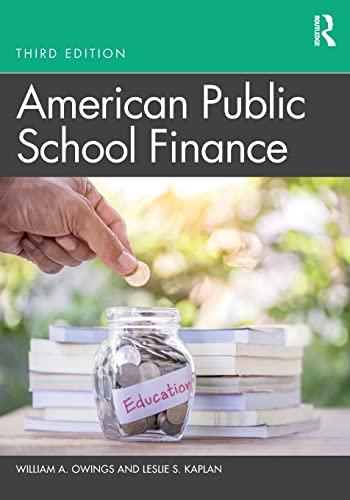Answered step by step
Verified Expert Solution
Question
1 Approved Answer
ELECTRONIC TIMING, INC. Electronic Timing. Inc. (ETI), is a small company founded 15 years ago by electronics engineers Tom Miller and Jessica Kerr. ETI manufactures
ELECTRONIC TIMING, INC. Electronic Timing. Inc. (ETI), is a small company founded 15 years ago by electronics engineers Tom Miller and Jessica Kerr. ETI manufactures integrated circuits to capitalize on the complex mixed-signal design technology and has recently entered the market for frequency timing generators, or silicon timing devices, which provide the timing signals or "clocks" necessary to synchronize electronic systems. Its clock products originally were used in PC video graphics applications, but the market has subsequently expanded to include motherboards, PC peripheral devices, and other digital consumer electronics, such as digital television boxes and game consoles. ETI also designs and markets custom application-specific integrated circuits (ASIC) for industrial customers. The ASIC's design combines analog and digital, or mixed-signal, technology. In addition to Tom and Jessica, Nolan Pittman, who provided capital for the company, is the third primary owner. Each owns 25 percent of the 1 million shares outstanding. The company has several other individuals, including current employees, who own the remaining shares. Recently, the company designed a new computer motherboard. The company's design is both more efficient and less expensive to manufacture, and the ETI design is expected to become standard in many personal computers. After investigating the possibility of manufacturing the new motherboard, ETI determined that the costs involved in building a new plant would be prohibitive. The owners also decided that they were unwilling to bring in another large outside owner. Instead, ETI sold the design to an outside firm. The sale of the motherboard design was completed for an aftertax payment of $30 million.
QUESTIONS 1. Tom believes the company should use the extra cash to pay a special one-time dividend. How will this proposal affect the stock price? How will it affect the value of the company?
2. Jessica believes the company should use the extra cash to pay off debt and upgrade and expand its existing manufacturing capability. How would Jessica's proposals affect the company?
3. Nolan favors a share repurchase. He argues that a repurchase will increase the company's PE ratio, return on assets, and return on equity. Are his arguments correct? How will a share repurchase affect the value of the company?
4. Another option discussed by Tom, Jessica, and Nolan would be to begin a regular dividend payment to shareholders. How would you evaluate this proposal?
5. One way to value a share of stock is the dividend growth, or growing perpetuity, model. Consider the following: The dividend payout ratio is 1 minus
6. where b is the "retention" or "plowback" ratio. So. the dividend next ver will be the earnings next year, E1, times 1 minus the retention ratio. The most commonly used equation to calculate the sustainable growth rate is the return on equity times the retention ratio. Substituting these relationships into the dividend growth model, we get the following equation to calculate the price of a share of stock today:
E1(1 - b) PO = R, - ROEx6
What are the implications of this result in terms of whether the company should pay a dividend or upgrade and expand its manufacturing capability? Explain. 6. Does the question of whether the company should pay a dividend depend on whether the company is organized as a corporationor LLC
Step by Step Solution
There are 3 Steps involved in it
Step: 1

Get Instant Access to Expert-Tailored Solutions
See step-by-step solutions with expert insights and AI powered tools for academic success
Step: 2

Step: 3

Ace Your Homework with AI
Get the answers you need in no time with our AI-driven, step-by-step assistance
Get Started


